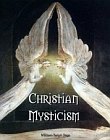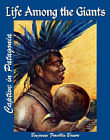
Hinduism And Buddhism - Volume 2

Description
An Historical Sketch
Volume 2
by
Sir Charles Eliot
In Three Volumes
Probably the first thought which will occur to the reader who is acquainted with the matters treated in this work will be that the subject is too large. A history of Hinduism or Buddhism or even of both within the frontiers of India may be a profitable though arduous task, but to attempt a historical sketch of the two faiths in their whole duration and extension over Eastern Asia is to choose a scene unsuited to any canvas which can be prepared at the present day.
Excerpt: HiddenMysteries
The obscurest period in the history of Buddhism is that which follows the reign of Asoka, but the enquirer cannot grope for long in these dark ages without stumbling upon the word Mahayana. This is the name given to a movement which in its various phases may be regarded as a philosophical school, a sect and a church, and though it is not always easy to define its relationship to other schools and sects it certainly became a prominent aspe ct of Buddhism in India about the beginning of our era besides achieving enduring triumphs in the Far East.
The word signifies Great Vehicle or Carriage, that is a means of conveyance to salvation, and is contrasted with Hinayana, the Little Vehicle, a name bestowed on the more conservative party though not willingly accepted by them. The simplest description of the two Vehicles is that given by the Chinese traveller I-Ching (635-713 A.D.) who saw them both as living realities in India. He says2 "Those who worship Bodhisattvas and read Mahayana Sutras are called Mahayanists, while those who do not do this are called Hinayanists."
In other words, the Mahayanists have scriptures of their own, not included in the Hinayanist Canon and adore superhuman beings in the stage of existence immediately below Buddhahood and practically differing little from Indian deities. Many characteristics could be added to I-Ching's description but they might not prove universally true of the Mahayana nor entirely absent from the Hinayana, for however divergent the two Vehicles may have become when separated geographically, for instance in Ceylon and Japan, it is clear that when they were in contact, as in India and China, the distinction was not always sharp. But in general the Mahayana was more popular, not in the sense of being simpler, for parts of its teaching were exceedingly abstruse, but in the sense of striving to invent or include doctrines agreeable to the masses.
It was less monastic than the older Buddhism, and more emotional; warmer in charity, more personal in devotion, more ornate in art, literature and ritual, more disposed to evolution and development, whereas the Hinayana was conservative and rigid, secluded in its cloisters and open to the plausible if unjust accusation of selfishness. The two sections are sometimes described as northern and southern Buddhism, but except as a rough description of their distribution at the present day, this distinction is not accurate, for the Mahayana penetrated to Java, while the Hinayana reached Central Asia and China. But it is true that the development of the Mahayana was due to influences prevalent in northern India and not equally prevalent in the South. The terms Pali and Sanskrit Buddhism are convenient and as accurate as can be expected of any nomenclature covering so large a field.
 Though European writers usually talk of two Yânas or Vehicles-the great and the little-and though this is clearly the important distinction for historical purposes, yet Indian and Chinese Buddhists frequently enumerate three. These are the Srâvakayâna, the vehicle of the ordinary Bhikshu who hopes to become an Arhat, the Pratyekabuddhayâna for the rare beings who are able to become Buddhas but do not preach the law to others, and in contrast to both of these the Mahayana or vehicle of Buddhas and Bodhisattvas.
Though European writers usually talk of two Yânas or Vehicles-the great and the little-and though this is clearly the important distinction for historical purposes, yet Indian and Chinese Buddhists frequently enumerate three. These are the Srâvakayâna, the vehicle of the ordinary Bhikshu who hopes to become an Arhat, the Pratyekabuddhayâna for the rare beings who are able to become Buddhas but do not preach the law to others, and in contrast to both of these the Mahayana or vehicle of Buddhas and Bodhisattvas.
As a rule these three Vehicles are not regarded as hostile or even incompatible. Thus the Lotus sutra, maintains that there is really but one vehicle though by a wise concession to human weakness the Buddha lets it appear that there are three to suit divers tastes. And the Mahayana is not a single vehicle but rather a train comprising many carriages of different classes. It has an unfortunate but distinct later phase known in Sanskrit as Mantrayâna and Vajrayâna but generally described by Europeans as Tantrism. This phase took some of the worst features in Hinduism, such as spells, charms, and the worship of goddesses, and with misplaced ingenuity fitted them into Buddhism. I shall treat of it in a subsequent chapter, for it is chronologically late. The silence of Hsüan Chuang and I-Ching implies that in the seventh century it was not a noticeable aspect of Indian Buddhism.
Although the record of the Mahayana in literature and art is clear and even brilliant, it is not easy either to trace its rise or connect its development with other events in India. Its annals are an interminable list of names and doctrines, but bring before us few living personalities and hence are dull. They are like a record of the Christian Church's fight against Arians, Monophysites and Nestorians with all the great figures of Byzantine history omitted or called in question. Hence I fear that my readers (if I have any) may find these chapters repellent, a mist of hypotheses and a catalogue of ancient paradoxes. I can only urge that if the history of the Mahayana is uncertain, its teaching fanciful and its scriptures tedious, yet it has been a force of the first magnitude in the secular history and art of China, Japan and Tibet and even to-day the most metaphysical of its sacred books, the Diamond Cutter, has probably more readers than Kant and Hegel.
Since the early history of the Mahayana is a matter for argument rather than precise statement, it will perhaps be best to begin with some account of its doctrines and literature and proceed afterwards to chronology. I may, however, mention that general tradition connects it with King Kanishka and asserts that the great doctors Asvaghosha and Nâgârjuna lived in and immediately after his reign.
The attitude of Kanishka and of the Council which he summoned towards the Mahayana is far from clear and I shall say something about this difficult subject below. Unfortunately his date is not beyond dispute for while a considerable consensus of opinion fixes his accession at about 78 A.D., some scholars place it earlier and others in the second century A.D.4 Apart from this, it appears established that the Sukhâvatî-vyûha which is definitely Mahayanist was translated into Chinese between 147 and 186 A.D. We may assume that it was then already well known and had been composed some time before, so that, whatever Kanishka's date may have been, Mahayanist doctrines must have been in existence about the time of the Christian era, and perhaps considerably earlier. Naturally no one date like a reign or a council can be selected to mark the beginning of a great school. Such a body of doctrine must have existed piecemeal and unauthorized before it was collected and recognized and some tenets are older than others.
Enlarging I-Ching's definition we may find in the Mahayana seven lines of thought or practice. All are not found in all sects and some are shared with the Hinayana but probably none are found fully developed outside the Mahayana. Many of them have parallels in the contemporary phases of Hinduism.
410+ pages - 8 x 5 inches SoftCover
Large Style Edition













